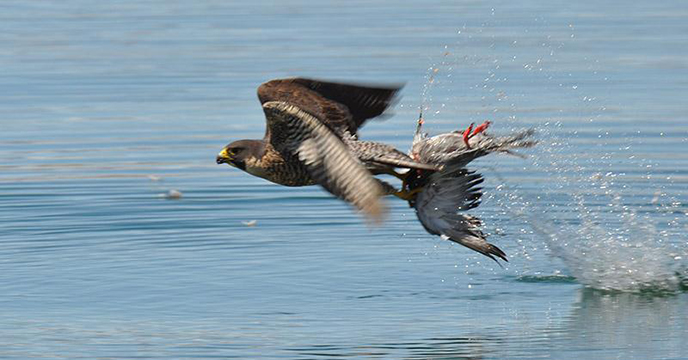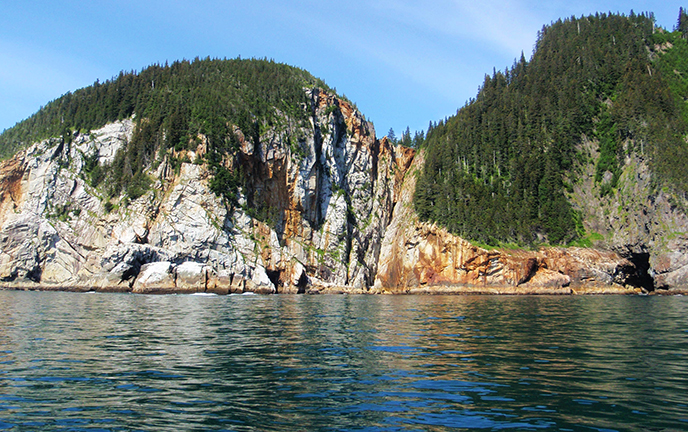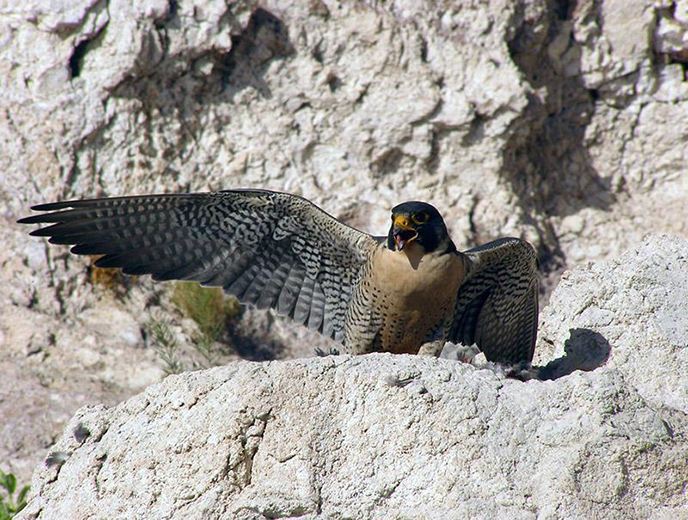At first all you see is a grey blur streaking three, four now five hundred feet down the sheer seacliffs in front of you. It isn’t until the bird pulls out of its dive and begins it’s distinct “E-CHOP!” calls that you get a clear view of the peregrine falcon. While it is widely known that the peregrine falcon is the fastest animal on the planet, diving at speeds over 200 miles per hour, knowing it and seeing it are very different things.
My name is Sam Stark, I’m a Biological Science Technician working in Kenai Fjords National park and the first time I saw a peregrine dive, I cheered. As a Bio Tech for the National Park Service I get to do some pretty incredible things and work in some amazing places, but few of my assignments can compare with our peregrine nest occupancy survey. Each May researchers travel along the entire 545 mile coastline of Kenai Fjords National Park revisiting known nest sites and searching for new ones.
The subspecies of peregrine found in the park is known as Peale’s peregrine falcon (Falco pereginus pealei). This subspecies is unique from other peregrines as it feeds almost exclusively on seabirds and builds its nests on sea cliffs adjacent to their colonies. So this is how I found myself staring through a pair of image stabilizing binoculars on a 14 ft skiff in the pouring rain cheering for a diving peregrine.

Searching for peregrine nests, like most wildlife work, requires two skills: keen eyesight and extreme patience. Finding a peregrine perched on 500 foot cliff with thousands upon thousands of seabirds swirling and chattering from the deck of a moving boat is, to say the least, very difficult.
Peregrines in flight are much easier to pick out of the crowd by their unique wing shape and their direct effortless flight. To increase the likelihood of spotting a peregrine we use an very loud speaker know as a Game Caller to play peregrine’s territorial “E-CHOP” call. If there are peregrines with an established territory in the area, they will usually dive from their perch, swoop high above and return the “E-CHOP” while they circle looking for the intruder to be vanquished. Ideally the peregrine will immediately return to the nest ledge and that will be that. Unfortunately this nearly never happens and what follows is usually a series of speculation as to which of the next six perches could be the nest as the bird moves from perch to perch.

Often historically occupied territories have no birds in them, either because the pair has moved to a new nesting area or are not nesting during that season. If no peregrines respond when the call is played the territory has to be monitored for 4 hours before it can be confirmed that there are no nesting birds there.
This survey, which is conducted annually by the National Park Service, is aimed tracking fluctuations in population of peregrines which nest within the park. These changes give park resource managers insight into larger trends taking place in the nearshore ecosystems of the park.
Look for these incredible hunters near seabird colonies on your next trip to the coast of Kenai Fjords National Park.

